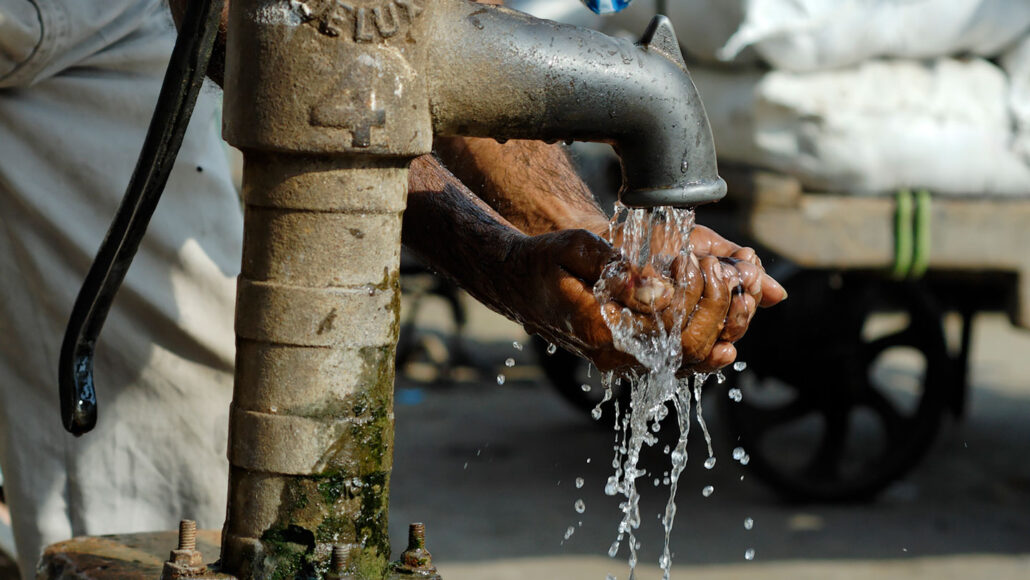Let’s learn about Earth’s secret stash of underground water
Groundwater, though largely hidden from view, is the most abundant source of freshwater on the planet

Groundwater quenches the thirst of some 2 billion people worldwide.
VanWyckExpress/E+/Getty Images
Share this:
- Share via email (Opens in new window) Email
- Click to share on Facebook (Opens in new window) Facebook
- Click to share on X (Opens in new window) X
- Click to share on Pinterest (Opens in new window) Pinterest
- Click to share on Reddit (Opens in new window) Reddit
- Share to Google Classroom (Opens in new window) Google Classroom
- Click to print (Opens in new window) Print
Walking over water might sound like a miracle. In fact, people do it all the time. How? Almost all of the world’s liquid freshwater lies underground. This stash beneath our feet is called groundwater.
Earth is a water planet, but most of its H2O is in the oceans. Only about 2.5 percent of the planet’s water is freshwater. Of that, nearly 69 percent is frozen in glaciers and ice caps. About 30 percent is groundwater — much more than the meager 1.2 percent that flows through rivers and fills lakes.
Groundwater is found almost everywhere on Earth. It lurks under mountains, plains and even deserts. Tiny gaps between rocks and soil grains soak up and hold this water like a sponge, forming buried bodies of water called aquifers. Together, they hold about 60 times as much water as the world’s lakes and rivers combined.
Groundwater is a key part of Earth’s water cycle. Rain and melted snow seep down into the ground. There, the water can stay for thousands of years. Some groundwater naturally leaks out onto Earth’s surface through springs. It also feeds into lakes, rivers and wetlands. People extract groundwater through wells for drinking, sanitation, watering crops and other uses.
In fact, people extract more than 200 times as much groundwater from Earth as oil every year. Most groundwater is used to water crops. But this water also quenches the thirst of some 2 billion people worldwide, including half the population of the United States.
As human-caused climate change dries out parts of the planet, demand for groundwater may rise. At the same time, climate change may intensify storms. Heavier rains are more likely to rush straight into streams and storm drains than soak into soil. So, there may be less groundwater to go around.
Many of the world’s aquifers already seem to be drying up. Twenty-one of Earth’s 37 biggest aquifers are shrinking, satellite data show. The most dried-out aquifers are near big cities, farms or arid regions. As groundwater stores dwindle, they hold less water to refill rivers and streams, threatening freshwater ecosystems. In California, sucking the ground dry may even be triggering small earthquakes.
Meanwhile, human activity pollutes groundwater in many places. Arsenic from farming or mining seeps into aquifers. So do chemicals that are injected underground to flush out oil or gas in a process called fracking. Electronic waste from discarded devices and sewage have also tainted groundwater. What can be done? Cutting back on pollution and finding new ways to purify groundwater may help protect this precious resource.
Want to know more? We’ve got some stories to get you started:
Groundwater pumping is draining rivers and streams worldwide Over half of pumped watersheds could pass a serious type of limit by 2050. (11/6/2019) Readability: 7.4
Many of Earth’s groundwater basins are drying out The majority of the world’s largest aquifers are quickly being drained. (6/30/2015) Readability: 8.1
A wave of change is coming to our planet’s water resources Thanks to climate change, Earth’s freshwater supplies will never be the same again. (12/6/2018) Readability: 7.7
Explore more
Explainer: Earth’s water is all connected in one vast cycle
Explainer: How is water cleaned up for drinking
Carbon ‘sponge’ found beneath desert
Thirst for water moves and shakes California
Not so sweet: Fake sugar found at sea
New ways to clean up polluted sources of drinking water
Six things that shouldn’t pollute your drinking water
Activities
Build your own model aquifer, take the clean water challenge or learn about groundwater with another one of the Groundwater Foundation’s hands-on activities. And see how water hidden underground affects the water on Earth’s surface using National Geographic’s interactive groundwater computer model.







